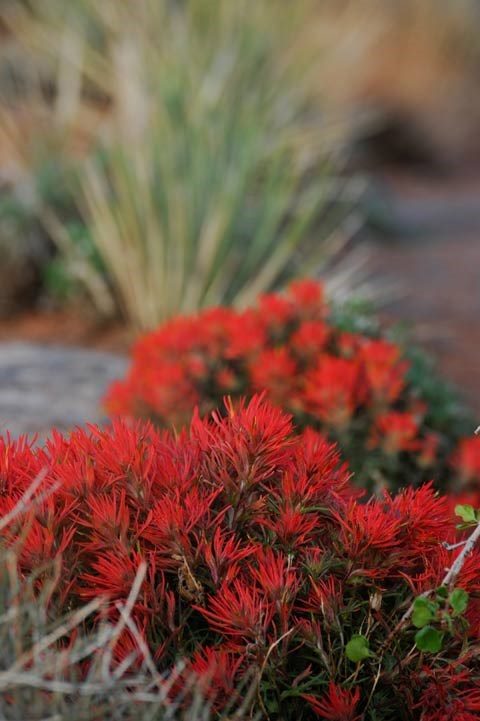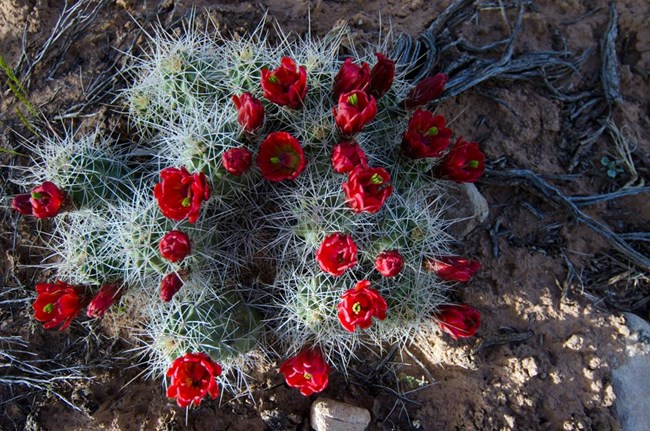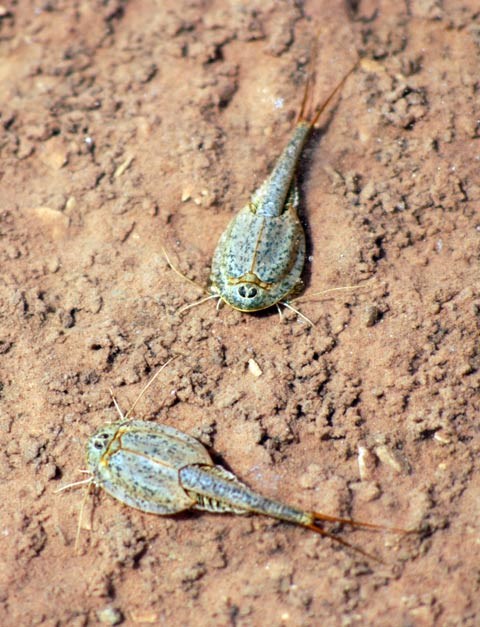Last updated: April 29, 2025
Article
Surviving in the Desert

NPS/Sierra Coon
The Colorado Plateau’s high desert is an arid region with extreme weather. Summers are hot and dry – surface temperatures can reach 140°F. Late summer monsoon rains bring the possibility of flash floods. In the winter, temperatures often reach below freezing and ice and snow are likely.
Despite these harsh conditions, the high desert is teeming with a variety of plants and animals. The largest concern for many of these plants and animals is water availability. These species have developed a variety of strategies to survive changes in water availability: escaping, resisting, tolerating, and evading drought.

NPS/Neal Herbert
Drought Escapers
Drought escapers cannot tolerate dehydration. Plant species escape drought by going dormant when favorable growing conditions disappear. These plants are usually annuals, growing only when enough water is available. Seeds produced under good conditions can lie dormant for years if conditions are not favorable for germination.
Some winged insects, amphibians, and invertebrates breed in potholes but cannot tolerate dehydration (e.g. mosquitoes, adult tadpole and fairy shrimp, spadefoot toads). In some cases, adults live in permanent water sources or on land and travel to temporary pools to mate and lay eggs. If the pool dries out before the young mature, they die, so survival is a race against time.

NPS/Sierra Coon
Drought Resistors
Drought resistors use special adaptations to prevent drying out. Animals like snails and mites have a waterproof layer, like a shell or exoskeleton, which prevents body tissues from losing too much water while a pool is dry. By burrowing, these animals are able to seal themselves in the layers of fine mud that often coat the bottom of potholes and form an impermeable crust
Many plants have specially adapted leaves to reduce water loss. They may have spiny, waxy, or hairy leaves that reduce the impact of solar radiation. They may ooze light-colored salt onto the surfaces of their leaves to reflect light. Some plants simply drop their leaves if water is unavailable. The Utah juniper tree (Juniperus utahensis) will stop water flow to certain parts of itself when moisture is scarce, thus allowing some outer branches to die, to give the tree itself a better chance for survival.
Another method plants use is the establishment of elaborate root systems. When mature, the root system of the pinyon pine (Pinus edulis) is at least as large as the above-ground portion of the tree with tap roots stretching 40 feet or more down, with lateral roots stretching just as far horizontally.

NPS Photo
Drought Tolerators
Drought tolerators are able to withstand losing much of their total body water content, in some cases up to 92 percent (e.g. rotifers, tadpole and fairy shrimp eggs). This process is known as cryptobiosis. Remarkably, many cryptobiotic species can be rehydrated and become fully functional in as little as half an hour. Cryptobiosis is accomplished by a command center in the organism that remains hydrated. Throughout the rest of the organism, water is replaced by sugar molecules. Changing water to sugar helps the organism’s cells keep shape. Many species are only tolerant during one stage in their life cycle (e.g. egg, larva) and will die if a pool dries up during another life cycle stage.
Drought Evaders
Drought evaders are a distinct group of plants that rely on location more than adaptation. These plants are only able to survive in wetter micro-climates, like riparian areas. Drought evaders include Fremont’s cottonwood (Populus fremontii), coyote willow (Salix exigua), and singleleaf ash (Fraxinus anomala).
How do we survive?
Humans also adapt to live in the desert. The ancestral Puebloans built villages around springs. Today, hikers carry water with them. Although we may not have spines like claret cup or burrow in mud like snails, we too are affected by the high desert’s constantly changing water supply. When visiting, your survival strategy should be to always carry water with you and two drink around one gallon (four liters) of water a day.
